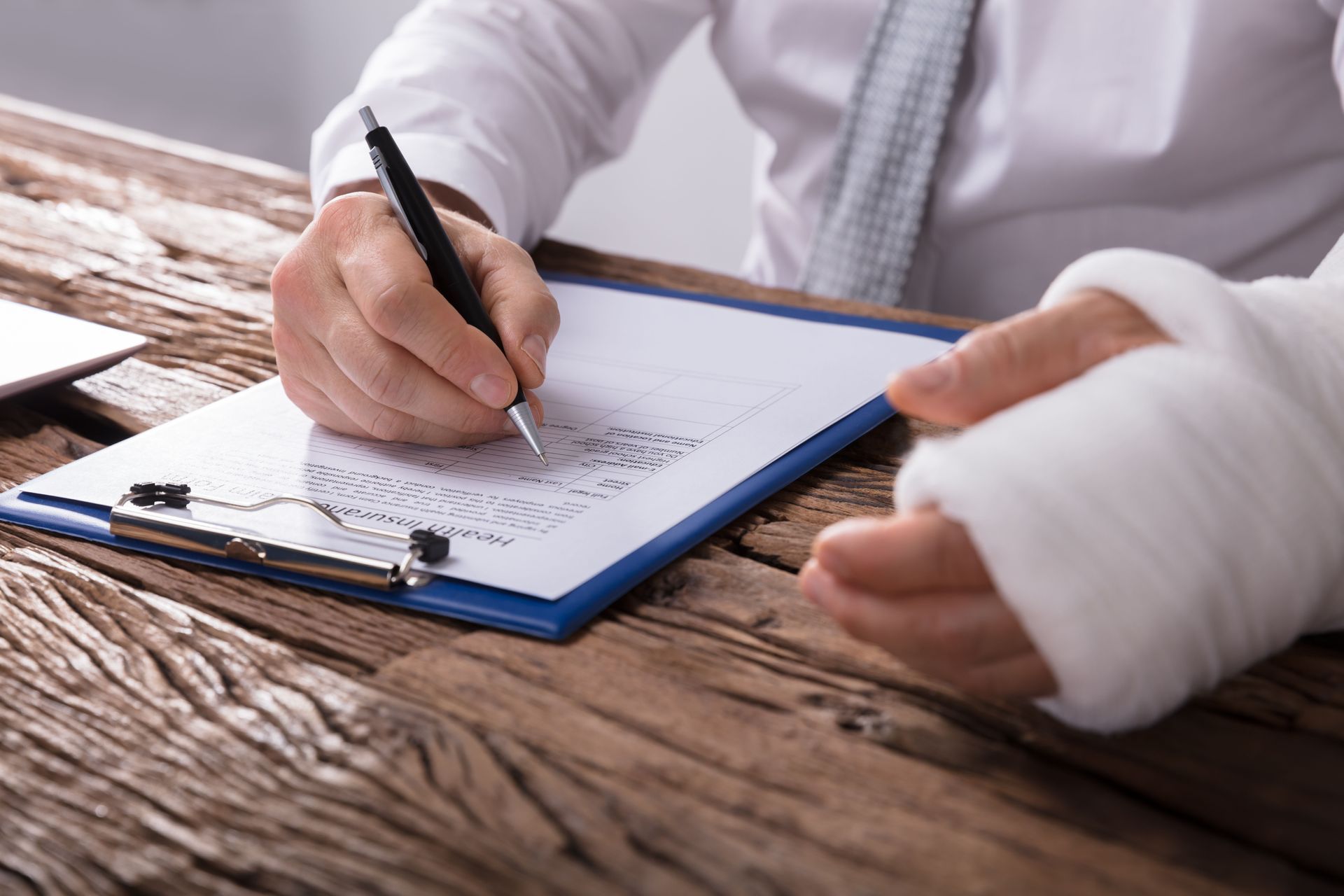The Legal Process: What to Expect After Filing a Personal Injury Lawsuit
Personal injury lawsuits can be complex and daunting for those unfamiliar with legal proceedings. Understanding each phase of the legal process is crucial to navigating the journey from filing to resolution successfully. With clear insights, individuals can better prepare and protect their rights as they seek justice and compensation for their injuries.
The stakes are high, as these cases often involve severe injuries and financial burdens resulting from medical expenses and lost wages. According to On The Map Marketing, there are 39.5 million injuries each year that require medical treatment, highlighting the significance of a robust legal approach. Therefore, familiarity with the steps and key factors involved in personal injury lawsuits is essential.
Initial Consultation
Choosing the Right Lawyer
Selecting the right personal injury attorney is paramount to the success of a personal injury lawsuit. A lawyer specialized in personal injury law brings expertise and experience that can significantly influence the case's outcome. When evaluating potential legal representatives, consider factors such as their reputation, success rate, and ability to communicate effectively. Meet with several lawyers before making a decision to ensure you find someone who aligns with your needs and expectations. Remember, this professional will be your advocate throughout the legal process, so trust and communication are essential.
Sifting through recommendations and online reviews can help gauge an attorney's reliability and expertise. Additionally, consult resources such as the local bar association for insights. An initial consultation is often the first step to assess the lawyer's capabilities and fit. During this meeting, discuss your case's specifics and inquire about the attorney's fees and expected costs. Transparency at this stage sets the foundation for a successful attorney-client relationship.
Evaluating Your Case
Once a lawyer is selected, the case evaluation is critical to strategizing the lawsuit. During this phase, the attorney thoroughly reviews the facts and circumstances surrounding your injury. They will examine medical documents, witness statements, and other pertinent details to determine the case's viability. The evaluation also involves assessing liability and potential damages, providing a forecast of possible outcomes. This comprehensive analysis is the groundwork for forming a personalized legal strategy tailored to your case's specifics.
The attorney will also evaluate evidence such as photos of the injury or accident scene to bolster the claim. Gathering as much information as possible strengthens the foundation of the lawsuit. Furthermore, understanding the scope of your injuries and their impact on your life is vital for determining compensation. Detailed case evaluation allows for better alignment of legal actions and client expectations. A strong start sets a positive trajectory for the lawsuit and enhances the likelihood of favorable results.
Setting Up the Attorney-Client Relationship
After selecting an attorney, establishing a formal attorney-client relationship is essential. This relationship is typically cemented through a contract outlining the services provided and the fee arrangement. Clear communication regarding fees is crucial to prevent misunderstandings. Contingency fees, where the lawyer receives a portion of the settlement, are common in personal injury cases. Understanding the contract terms helps both parties maintain a professional and transparent relationship throughout the legal process.
The contract also specifies the scope of the attorney's responsibilities and any other agreements pertinent to the case, such as confidentiality. This legal agreement protects both the client and attorney, clarifying expectations and obligations. A signed contract signifies mutual commitment to pursuing the case diligently. Building this trusted relationship from the start can significantly impact the case's success, fostering a cooperative and proactive approach. Clients should feel comfortable seeking clarifications about the terms to ensure alignment with their expectations.
Gathering Initial Information
Once the attorney-client relationship is established, the next step involves gathering all necessary information related to the case. Clients must provide accurate and comprehensive details about the incident, injuries, and any previous communications with the defendant or insurers. This includes sharing medical records, photographs, expenses, and witness information. Providing this information promptly aids in constructing a compelling case narrative. Attorneys use this information to identify strengths, potential weaknesses, and devise a strategic plan.
Complaint Filing
Understanding the Complaint Document
The complaint is the official document that initiates a personal injury lawsuit. It outlines the plaintiff's claims against the defendant and the legal grounds for those claims. An effectively crafted complaint is crucial for setting the lawsuit in motion and defining the case's trajectory. The document typically includes detailed descriptions of the events leading to the injury, the damages incurred, and the relief sought. Crafting a detailed and accurate complaint reflects thorough preparation and is critical for the lawsuit's integrity.
The complaint also serves to notify the defendant formally of the claims being made. This notification initiates the lawsuit process and compels the defendant to respond. A well-drafted complaint clarifies the legal and factual issues at hand, making it easier for the court to understand the case. Furthermore, it sets the stage for subsequent legal proceedings, including discovery. Plaintiffs work closely with their legal representatives to ensure the complaint is comprehensive and compelling, enhancing the likelihood of a favorable outcome.
Considering Jurisdiction
Choosing the appropriate jurisdiction for filing a personal injury lawsuit is a critical decision that can affect the case's outcome. Jurisdiction refers to the court's authority to hear and decide a case based on the geographic location and subject matter. Filing in the proper jurisdiction ensures that the court has the legal power to render a judgment and enforce rulings. An attorney evaluates factors such as where the injury occurred, the parties' residences, and monetary considerations to determine the suitable jurisdiction. Understanding these factors helps streamline the lawsuit process and avoid unnecessary legal hurdles.
Serving the Defendant
Once a complaint is filed, serving the defendant is the next step to legally initiate the lawsuit. Service of process is the formal delivery of legal documents to notify the defendant of the claims. Proper service ensures the defendant is aware of the lawsuit and can participate in the legal process. Rules regarding service of process vary by jurisdiction but generally require delivering documents in person, through certified mail, or by publication. This process upholds the principles of due process by ensuring defendants have an opportunity to respond to allegations.
Discovery Process
Understanding Discovery
The discovery process is a pivotal phase in a personal injury lawsuit where both parties exchange information and evidence. This exchange is essential for uncovering facts, clarifying legal issues, and preparing for trial. Discovery allows each side to understand the strengths and weaknesses of the opposing case. Various tools are employed, including interrogatories, depositions, and requests for documents, to gather comprehensive information. Navigating discovery efficiently is crucial to crafting a robust legal strategy.
Discovery is governed by procedural rules aimed at promoting fairness and transparency. It ensures that all parties have access to pertinent information, reducing surprises at trial. The information uncovered can significantly impact the direction of the lawsuit, influencing settlement negotiations or adjustments to legal arguments. Proactive engagement in the discovery process enables effective case preparation and improved readiness for potential court proceedings. Understanding the objectives and methods of discovery arms plaintiffs with the knowledge needed for informed strategic decisions.
Navigating a personal injury lawsuit requires careful attention to each phase of the legal process, from selecting the right attorney to engaging in discovery. Understanding the steps involved, case evaluation, complaint filing, jurisdiction considerations, serving the defendant, and discovery, empowers individuals to protect their rights and pursue fair compensation for their injuries. For a
personal injury attorney you can count on, contact Law Office of Chet Zawalich today.





Share On: